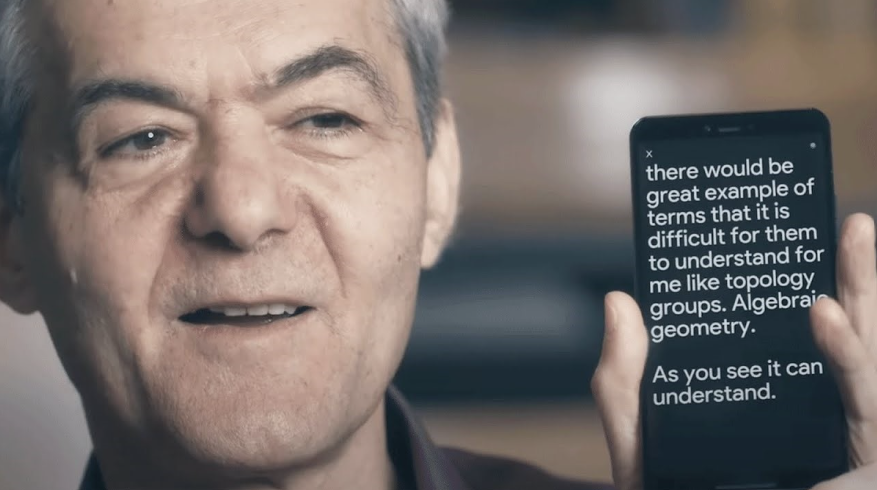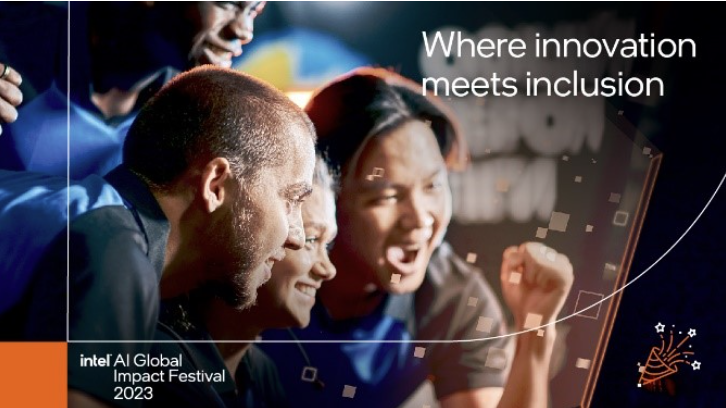From barriers to bridges: harnessing AI's transformative role for accessibility
Recent developments in AI technology hold great promise for the future of accessibility. Whether it’s by making technology more accessible for people with disabilities, or powering specific assistive tools or applications, this could prove a seminal moment for equity and inclusion. But there are some risks, like if these AI tools give inaccurate and hard to verify outputs, or if they are not trained on inclusive data.
Why is this important? How can we harness AI to support people with disabilities? And what must be done to overcome key challenges?
Disability and employment
According to the DWP, although around 53% of the disabled working age population is in employment, the unemployment rate is double that of non-disabled people. These inequalities persist when you consider economic inactivity, with 42.3% of people with disabilities not working or looking for work, and the overall employment gap between them and non-disabled people also sits at a whopping 29%.
There are a number of barriers to employment that people with disabilities might face in the workplace and people with disabilities are twice as likely to leave their jobs than non-disabled people. These include negative attitudes and discrimination, that might manifest in inaccessible workplaces, recruitment biases or in a lack of understanding or empathy at work. Indeed, according to Scope, two of the key barriers people with disabilities face centre around core accessibility challenges, such as a lack of accessible technology, and insufficient support, training, and reasonable adjustments.
It is clear that more can be done to support people with disabilities to enter and remain in the workforce, underpinned by more accessible and assistive tech solutions including those powered by AI.
Powering accessibility with AI
Looking across the tech landscape, we can already see the clear potential of AI for accessibility. There are great examples of how this technology can be deployed to support people with disabilities, helping them with both daily and workplace tasks.
Google Project Euphonia

Google’s Project Euphonia is a research initiative exploring how AI can be leveraged to make speech recognition technology more accessible. By working with community groups, Google has already been able to compile a collection of inclusive speech samples from over 2000 people to adapt speech recognition systems, reducing median word error rates by an average of more than 80%. And they have recently become involved in the Speech Accessibility Project, a collaboration of technology companies, advocacy groups and a US university to create datasets of impaired speech for the communities these organisations support.
This project led to the release of Project Relate, an app that allows people to submit samples of their own voice to receive a personalised speech recognition experience.
Microsoft and Be My Eyes use AI to make customer service accessible
Microsoft has integrated AI in customer service for blind users through the Be My Eyes partnership, using their Be My AI digital visual assistant powered by GPT-4. The integration of this assistant into Microsoft’s Disability Answer Desk is enabling blind or low vision users can to use AI to handle all types of customer service calls, from Excel spreadsheet formulas and interpreting product instructions, to rebooting a laptop or installing and updating software.
The rollout has been a success, with the AI assistant achieving a 90% resolution rate and solving customer issues in a third of the time it would take a live agent – in turn, boosting customer satisfaction ratings.
Infosys Accessibility Platform
Infosys Accessibility Platform is an AI-powered accessibility solution aimed at tackling the issue of an inaccessible web, with plugins for browsers and IDEs. The platform can check the accessibility of HTML code, documents and web content to check for compliance with W3C accessibility standards as well as national requirements, whilst also providing AI-powered content sensitivity and remediation utilities to enable quicker resolutions to any issues.
OpenText Enterprise Document Accessibility
OpenText Enterprise Document Accessibility makes it easy to manually remediate ad hoc PDF documents for people with disabilities who leverage assistive technologies. Document Accessibility offers an intuitive user interface and AI capabilities to enable organisations to easily comply with accessibility standards and regulations, and create accessible content for all audiences.
As they note in this blog, AI-powered tools are streamlining document conversion and using natural language processing to tag content with the metadata needed for easy navigation by users with disabilities, as well as powering accessibility in cases of high-volume document composition.
Intel AI Innovation for Accessibility awards

Last year, Intel introduced a new award for projects focused on AI innovation for accessibility. Students were judged on how well their projects manage potential risks, and the winners’ projects went through an ethics audit by Intel’s Responsible AI team much like any internal project would.
Award winners included a project that uses eye tracking for communicating for patient with ALS; an AI-powered robotic service animal; an AI-enabled multi-tech solution to help individuals with dementia navigate their surroundings confidently and independently; and an AI solution to improve braille learning.
Swindon Council uses AI to support people with disabilities
A local volunteer focus group – Experts by Experience of a Learning Disability – has been working alongside Swindon Borough Council to use the power of AI to improve the independence of people with learning disabilities. They have been involved in the creation of a Generative AI solution, powered by AWS, that converts complex documents into the accessible Easy Read format, meaning that documents will be converted into a document that empowers people with learning disabilities to understand the information they need to know in order to make key decisions about their lives. Council staff maintain oversight and review any outputs. The tool has massively reduced the cost of creating these documents, can be converted into over 70 different languages, and is being made open-source by the council.
Why thinking about accessibility is more important than ever
Despite the great opportunity, there is still work to be done. A study on the effectiveness of generative AI tools to assist people with various disabilities found that whilst some users saw benefits, they also faced issues around accuracy and ableism – with huge variations across different tasks.
It is clear that an enhanced focus on accessibility is required.
This is something we emphasised in in our recent Making AI work for Britain report, noting in particular that the integration of accessibility-focused AI into flexible and hybrid working platforms like Zoom could prove a powerful combination in driving workplace opportunity. We also highlighted how AI could help learners to pick up new skills and target training, with innovations like personalised learning helping to ensure every person is supported to succeed.
Indeed, we have already seen how innovations intended to support people with disabilities can result in new, universal technologies. It is therefore notable that assistive technologies like screen readers depend on much of the same information that some AI systems do. By embedding accessibility principles across web content and applications we can help both of these technologies to parse content more easily; driving benefits for all.
AI can be a transformative technology for accessibility, but delivering on its promise will require action from us all to ensure no-one is left behind.
We at techUK are committed to driving a more diverse and inclusive sector, and we want to hear from you! If you or your company is working on assistive and accessible technology, please get in touch.

Skills, Talent and Diversity updates
Sign-up to get the latest updates and opportunities from our Skills, Talent and Diversity programme.
Authors
Jake Wall
Policy Manager, Skills and Future of Work, techUK
Jake has been the Policy Manager for Skills and Future of Work since May 2022, supporting techUK's work to empower the UK to skill, attract and retain the brightest global talent, and prepare for the digital transformations of the future workplace.
Previously, Jake was the Programme Assistant for Policy. He joined techUK in March 2019 and has also worked across the EU Exit, International Trade, and Cloud, Data Analytics and AI programmes.
He also holds an MA in International Relations from the University of Sussex, as well as a BA(Hons) in International Politics from Aberystwyth University. During his time at Aberystwyth University, he won the International Politics Dissertation Prize.
- Email:
- [email protected]
- LinkedIn:
- www.linkedin.com/jwwuk
Read lessmore








